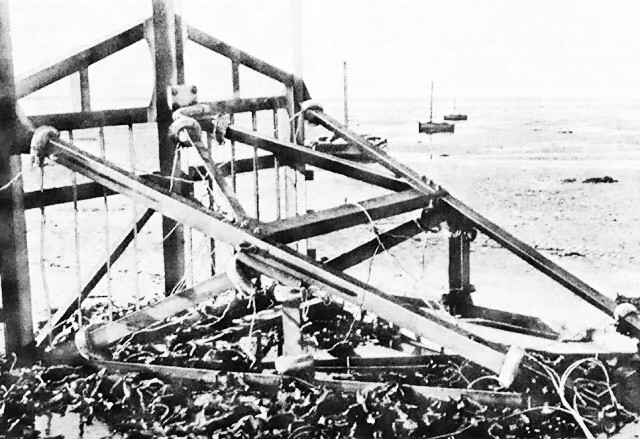|
Cointet-element
The Cointet-element, also known as a Belgian Gate or C-element, was a heavy steel fence about wide and high, typically mounted on concrete rollers, used as a mobile anti-tank obstacle during World War II. Each individual fence element weighed about and was movable (e.g. with two horses) through the use of two fixed and one rotating roller. Its invention is attributed to a French colonel (later general), Léon-Edmond de Cointet de Fillain who came up with the idea in 1933 to be used in the Maginot Line. Besides their use as barricades to the entrances of forts, bridges and roads, the heavy fences were used in the Belgian "Iron Wall" of the Koningshooikt—Wavre Line (also known as "Dyle Line") and their re-use as beach obstacles on the ''Atlantic Wall'' defending Normandy from Allied invasion. History The Cointet-element formed the main barricade of the Belgian K-W Line, a tank barricade that was built between September 1939 and May 1940. Following tests, the Belgian Arm ... [...More Info...] [...Related Items...] OR: [Wikipedia] [Google] [Baidu] |
Belgian Gate
The Cointet-element, also known as a Belgian Gate or C-element, was a heavy steel fence about wide and high, typically mounted on concrete rollers, used as a mobile anti-tank obstacle during World War II. Each individual fence element weighed about and was movable (e.g. with two horses) through the use of two fixed and one rotating roller. Its invention is attributed to a French colonel (later general), Léon-Edmond de Cointet de Fillain who came up with the idea in 1933 to be used in the Maginot Line. Besides their use as barricades to the entrances of forts, bridges and roads, the heavy fences were used in the Belgian "Iron Wall" of the Koningshooikt—Wavre Line (also known as "Dyle Line") and their re-use as beach obstacles on the ''Atlantic Wall'' defending Normandy from Allied invasion. History The Cointet-element formed the main barricade of the Belgian K-W Line, a tank barricade that was built between September 1939 and May 1940. Following tests, the Belgian Arm ... [...More Info...] [...Related Items...] OR: [Wikipedia] [Google] [Baidu] |
